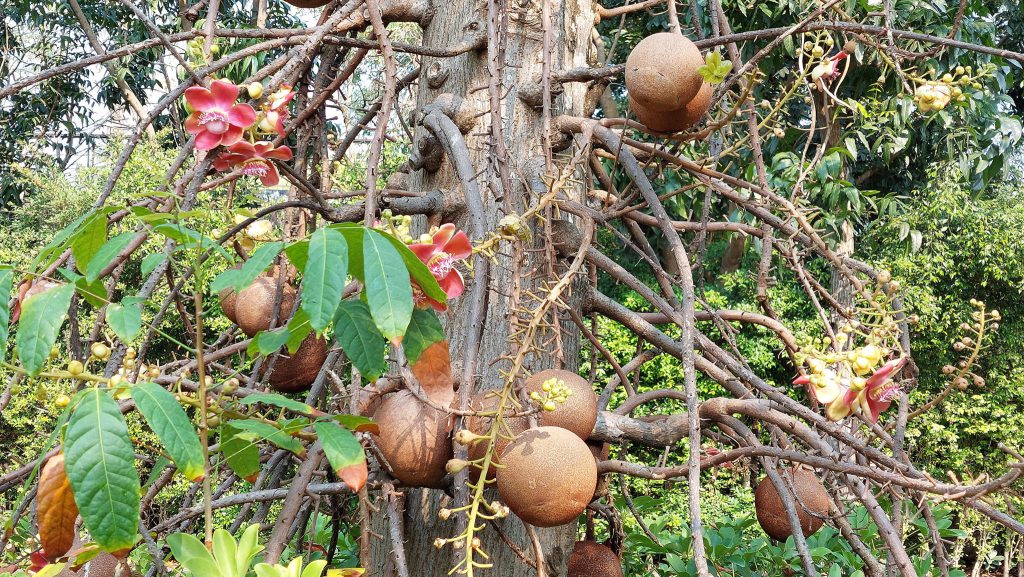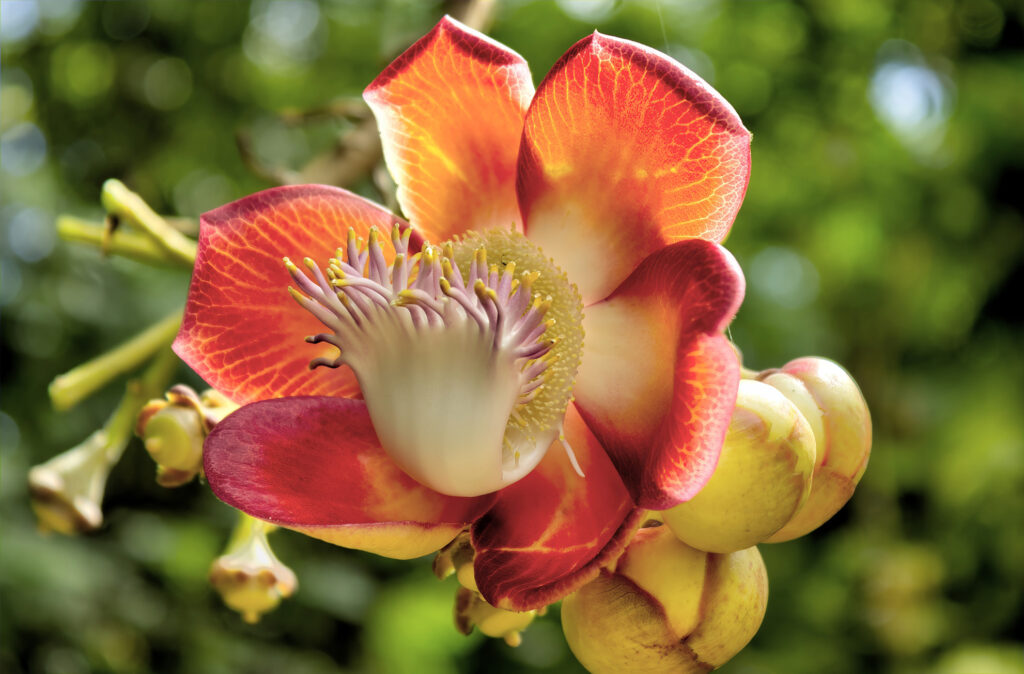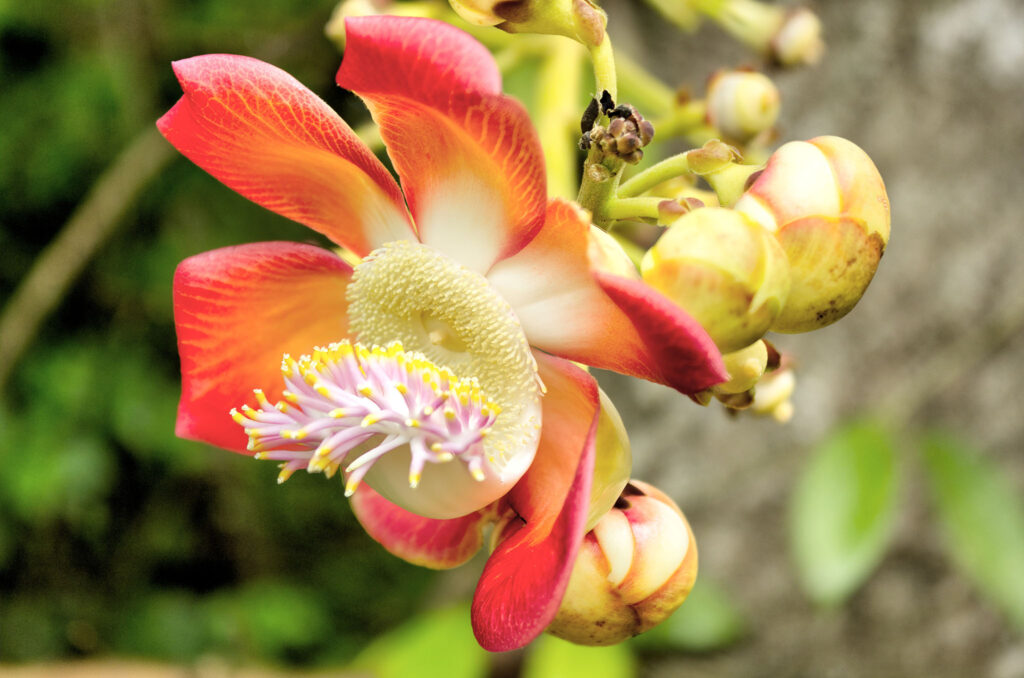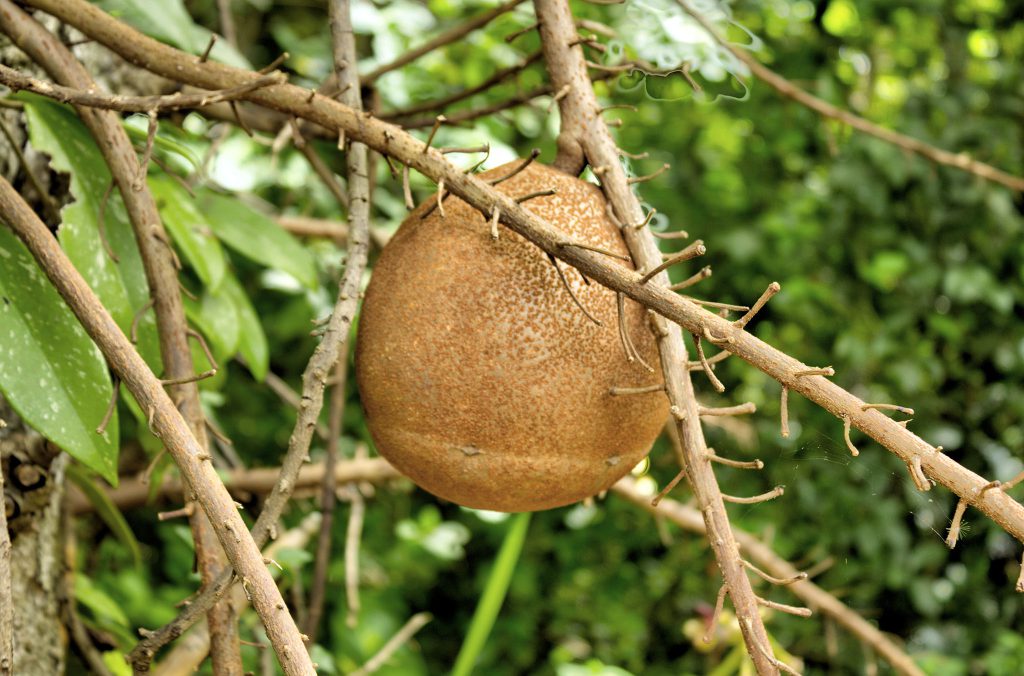Scientific name: Couroupita guianensis
Common names: Cannonball tree
Couroupita guianensis, also known as the cannonball tree, belongs to the deciduous tree species within the Lecythidaceae flowering plant family. Originating from the tropical forests of Central and South America, this tree is grown in various tropical regions worldwide for its aromatic flowers and sizable brownish-grey fruits. The Couroupita guianensis tree holds potential medicinal properties across its various parts and carries cultural and religious significance in South and Southeast Asia.

Medicinal uses:
The Couroupita guianensis tree, has a few traditional medicinal uses, primarily in the regions where it grows. Some of these uses include:
- Antifungal and Antibacterial Properties: Various parts of the tree, including the bark, leaves, and fruit, are believed to have antifungal and antibacterial properties. Extracts from these parts have been used in traditional medicine to treat fungal and bacterial infections.
- Anti-inflammatory Properties: The bark and leaves of the cannonball tree are sometimes used to make decoctions or poultices believed to have anti-inflammatory effects. These preparations are used to reduce inflammation and relieve pain.
- Treatment of Skin Conditions: In some cultures, extracts from the bark and leaves of the cannonball tree are used topically to treat skin conditions such as eczema, rashes, and wounds.
- Antioxidant Properties: Some studies have suggested that extracts from the cannonball tree have antioxidant properties, which could help protect against oxidative stress and related health issues.



